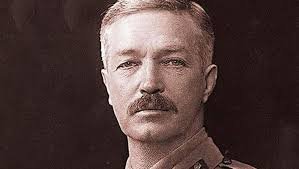Introduction
The Jallianwala Bagh massacre, also known as the Amritsar massacre, stands as one of the most tragic and pivotal events in India’s struggle for independence. On April 13, 1919, British troops under the command of Brigadier General Reginald Dyer opened fire on a peaceful gathering in Amritsar, Punjab, leading to the death of hundreds of unarmed civilians. This article delves into General Dyer’s role in the massacre, its implications, and its significance in India’s colonial history.
The Prelude to the Massacre
In the aftermath of World War I, the British government enacted the Rowlatt Act in 1919, allowing for the detention of individuals without trial. This act sparked widespread protests across India. In Amritsar, the arrest of two prominent leaders, Dr. Saifuddin Kitchlew and Dr. Satyapal, intensified public unrest. On April 13, coinciding with the Baisakhi festival, thousands gathered at Jallianwala Bagh to protest peacefully against the Rowlatt Act and the arrests.
General Dyer’s Actions
Brigadier General Reginald Dyer, perceiving the assembly as a threat, led a contingent of troops to Jallianwala Bagh. Without issuing any warning, Dyer ordered his soldiers to block the main exit and open fire on the crowd. The firing lasted approximately ten minutes, during which 1,650 rounds were discharged. The official British report cited 379 deaths, but Indian sources estimated over 1,000 fatalities and more than 1,200 injuries.
Aftermath and Repercussions
The massacre elicited widespread condemnation. The British government established the Hunter Commission to investigate the incident. While the commission criticized Dyer’s actions, he faced no formal punishment and was even lauded by some British officials. In India, the massacre galvanized the independence movement, leading to the launch of the Non-Cooperation Movement by Mahatma Gandhi in 1920.
Legacy of General Dyer
General Dyer’s actions at Jallianwala Bagh left an indelible mark on India’s colonial history. He became a symbol of British oppression, and the massacre is remembered as a turning point that intensified the Indian struggle for freedom. The site of the massacre has since been transformed into a memorial, serving as a somber reminder of the atrocities committed during British rule.

Why This News is Important
Relevance to Competitive Exams
Understanding the Jallianwala Bagh massacre is crucial for aspirants of government exams like UPSC, SSC, and State PSCs. It highlights the oppressive policies of the British colonial administration and the events that fueled India’s independence movement.
Lessons in Leadership and Ethics
General Dyer’s actions serve as a case study in leadership ethics and the consequences of misuse of power. Analyzing such historical events aids in comprehending the importance of accountability and moral responsibility in governance.
Historical Context
The early 20th century was marked by growing unrest in India against British colonial policies. The Rowlatt Act of 1919, perceived as draconian, curtailed civil liberties and led to nationwide protests. The Jallianwala Bagh massacre occurred within this context of heightened tensions and is emblematic of the brutal measures employed by the British to suppress dissent.
Key Takeaways from “General Dyer’s Role in the Jallianwala Bagh Massacre”
| S.No. | Key Takeaway |
|---|---|
| 1 | The Jallianwala Bagh massacre occurred on April 13, 1919, in Amritsar, Punjab. |
| 2 | General Dyer ordered troops to fire on a peaceful gathering without warning. |
| 3 | Official reports cited 379 deaths; Indian estimates suggest over 1,000 fatalities. |
| 4 | The massacre led to widespread condemnation and intensified the independence movement. |
| 5 | The event remains a symbol of colonial oppression and is commemorated at the Jallianwala Bagh memorial. |
FAQs: Frequently Asked Questions on General Dyer and the Jallianwala Bagh Massacre
1. Who was General Dyer?
General Reginald Dyer was a British officer in the Indian Army who ordered the firing on unarmed civilians at Jallianwala Bagh in Amritsar on April 13, 1919.
2. What was the Jallianwala Bagh massacre?
It was a tragic incident where British troops, under General Dyer’s command, opened fire on a peaceful gathering of Indians protesting the Rowlatt Act, resulting in hundreds of deaths.
3. What was the immediate cause of the massacre?
The peaceful protest was against the Rowlatt Act and the arrest of national leaders Dr. Satyapal and Dr. Kitchlew.
4. How did the British respond to the massacre?
The British government appointed the Hunter Commission to investigate. It condemned Dyer’s actions but did not impose serious consequences on him.
5. Why is this event important for exams?
It is a landmark event in modern Indian history, often covered in competitive exams like UPSC, State PSCs, SSC, and defence recruitment exams for its historical, ethical, and political relevance.
Some Important Current Affairs Links

















